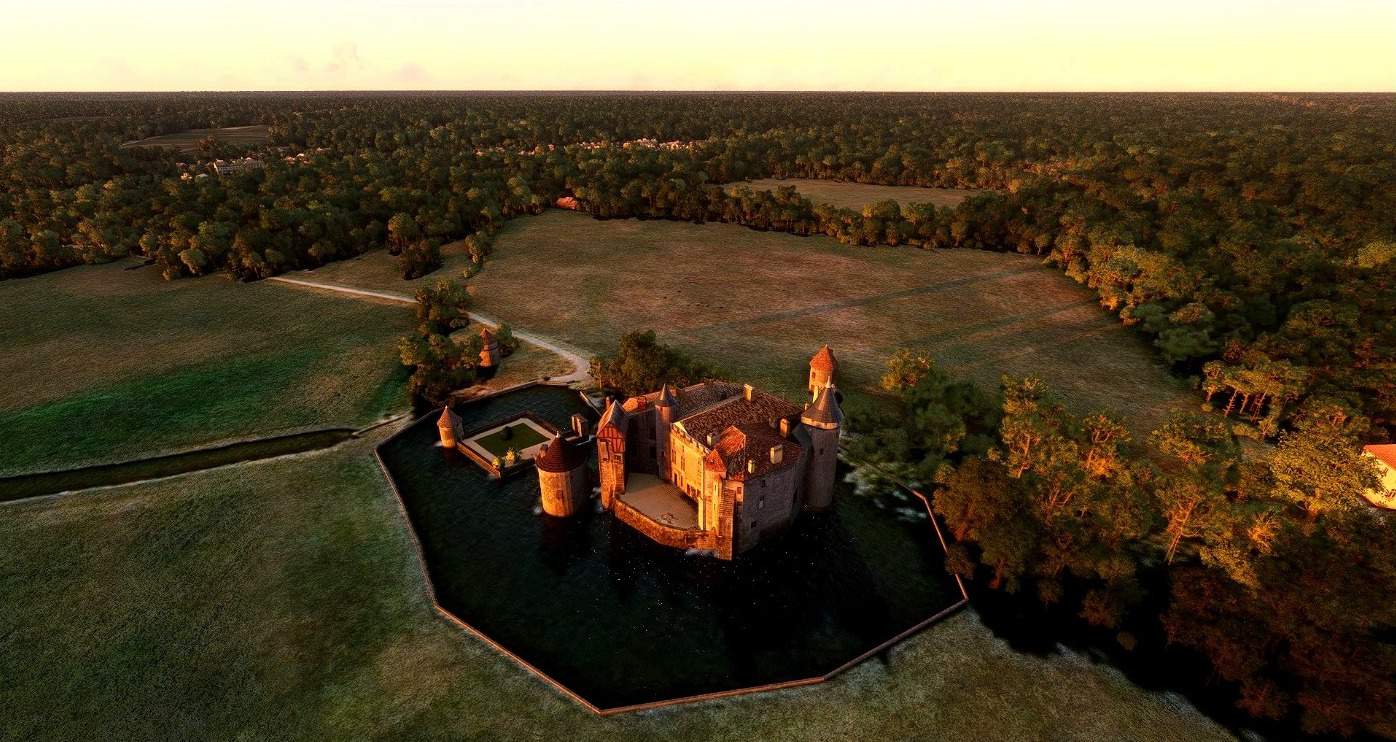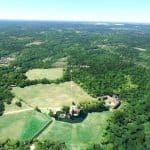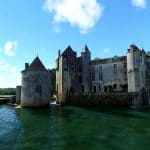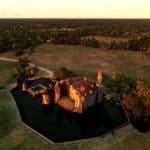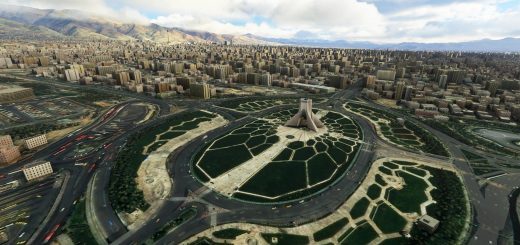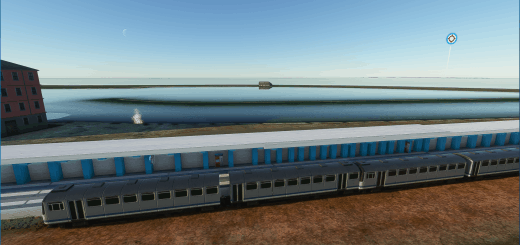Château de La Brède v0.1
The Château de La Brède is a feudal castle in the commune of La Brède in the département of Gironde, France.
The castle was built in the Gothic style starting in 1306, on the site of an earlier castle. It is surrounded by water-filled moats and an English garden, in the centre of a Bordelais vineyard. Despite modifications over the centuries, it has kept its character as a fortress.
La Brède was not entirely spared from the conflicts and consequences of the Hundred Years War. In 1419, the chateau was damaged by French artillery fire and Jean de La Lande secured permission to fortify the structure once more. A third, oval-shaped moat was then created and connected to the previous two. In 1453, his son, Jean de Lalande, left for England. His property was seized by the King of France and the chateau was returned to him ten years later.
Following the marriage of Jean de La Lande’s great-granddaughter, the Château de La Brède passed to the Penel (or Pesnel) family. In 1577, the walls surrounding the moats were joined to form a single edifice, creating a large lake. The chateau was no longer a fortress but became a country residence. Just three drawbridges remained. The chateau now had its final form, and the external structure would subsequently change only very little.
The philosopher Montesquieu (full title: Charles Louis de Secondat, baron de La Brède et de Montesquieu) was born, lived and wrote the majority of his works here. Visitors may see his library (though the books have been transferred to the library in Bordeaux) and his bedroom, both preserved as they were in the 18th century.
During the 19th century, the modernisation of the Château de La Brède did not affect the determination to keep the reminders of Montesquieu intact. Visitors, at first from learned societies or local academic institutions, asked to pay their respects in the room where Montesquieu had spent his final years. La Brède became an essential stopping-off point for any author visiting the Gironde. Stendhal, for example, left a detailed description of his impressions of the Château de La Brède when he visited in 1838.
There is little in the way of documented history for the chateau in the 20th century. After the work carried out by Paul Abadie, it appears that there were no further changes to the external structure or the internal arrangement of the chateau. The two global conflicts during the 20th century had no major impacts on the La Brède estate, despite its occupation by German troops during the Second World War.
In 1951, the Château de La Brède was listed as a French historical monument, with the whole estate being listed in 2008.
At her death in 2004, the Countess of Chabannes, a descendant of Montesquieu and last owner of the château, bequeathed her belongings, including the castle, to the Foundation named after her.
The castle is open to visitors from Easter to 11 November.
The castle was recreated manually from various photos and videos from the internet. It comes with its own POI.
This mod is not intended for sale or resale.
Coordinates: 44.679061990871844, -0.5442618795241759

